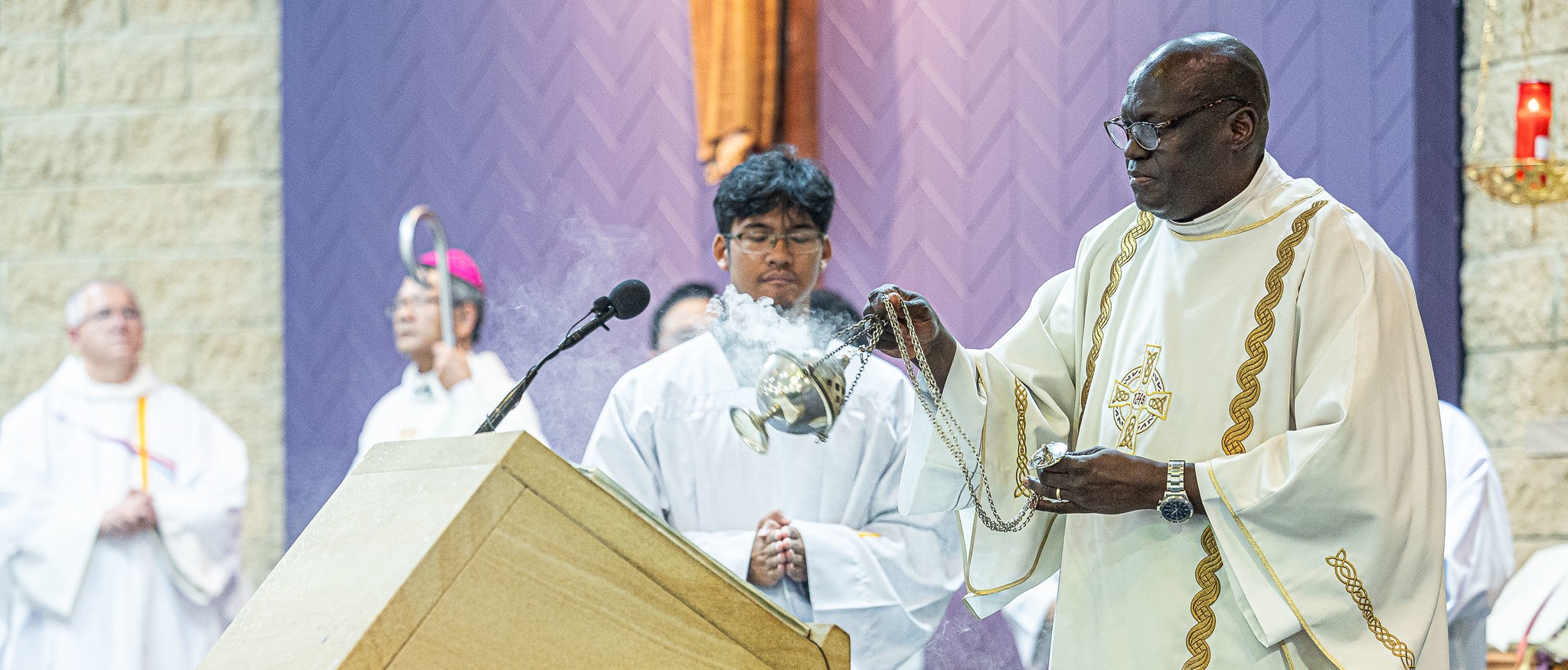Liturgy of the Word
National Liturgical Council

Apart from the opening and closing rites, the Mass consists of two major parts, the Liturgy of the Word and the Liturgy of the Eucharist. These are not separate and unrelated, but “so closely interconnected that they form but one single act of worship. For in the Mass is spread the table both of God’s Word and of the Body of Christ, and from it the faithful are to be instructed and refreshed” (GIRM #28). All the same, the focus in each part is distinct. In the first it is on the table from which the word of God is proclaimed, the ambo. In the second it is on the table from which we are fed with the Body and Blood of Christ, often simply called the altar.
One of the great achievements of the Second Vatican Council was to ensure that Catholic believers were fed a much richer diet of the word of God, especially at Sunday Mass. After the Council a large team of international biblical and liturgical scholars worked together to produce a book of scripture readings for Mass. It is called a Lectionary. It does not by any means contain the whole Bible but it does have a wide range of readings from both the Old and the New Testament. The Sunday readings are arranged in a three-year cycle, with each year’s selection being ordered to the seasons and feasts of the Church’s year.
There’s more to the Liturgy of the Word than the readings but they form the bedrock. This is how they unfold:
- First Reading
- Responsorial Psalm
- Second Reading
- Gospel Acclamation
- Gospel.
All the readings are proclaimed by designated members of the congregation, except for the Gospel which is reserved to the priest or deacon.
The First Reading is always taken from the Old Testament, except during the Easter season, when it comes from the Acts of the Apostles. Most of the time the first reading is chosen because it has a connection of some kind with the Gospel of the day. After a period of silence (not often observed), the Responsorial Psalm is sung or proclaimed. It usually consists of three or four verses of a psalm that echo the theme of the first reading. First a one- or two-line response is announced or sung, then repeated immediately by the whole congregation and after each verse. The aim of the Responsorial Psalm is to enable everyone to take the Word of God to heart.
The Second Reading comes from the writings of the New Testament other than the Gospel. Most often it is an excerpt from one of the letters of Paul, but it could also come from the letters of Peter, James or John, or another writing such as the Book of Revelation. During Ordinary Time these readings follow on from one another Sunday by Sunday, but are independent from the First Reading and Gospel. A period of silence should follow.
The Gospel Acclamation is a short burst of praise that prepares for the gospel reading. Except during Lent it is called the Alleluia verse. It is always meant to be sung.
The Gospel Reading is the cornerstone of the Liturgy of the Word. Its importance is reflected in the honour given to the gospel book and in entrusting its proclamation to the priest or deacon.
Completing the Liturgy of the Word
Once the readings have been proclaimed, the priest or deacon has the privilege and task of “breaking open the word” in the homily. The role of the homilist is to assist the congregation to experience the word of God as “living and active” (Hebrews 4:12), so that their hearts will burn within them as happened for the disciples at Emmaus (Luke 24:32). In this way, as Pope Francis wrote in his encyclical The Joy of the Gospel, “the homily can actually be an intense and happy experience of the Spirit, a consoling encounter with God’s word, a constant source of renewal and growth” (#135). This experience would be enhanced when the homily is followed by a period of silent reflection.
After that comes the Profession of Faith. All stand to recite together one of the ancient formulas that sum up the essential beliefs of Christian believers. The Apostles Creed is the older and shorter form; the Nicene Creed is a fuller version forged in the doctrinal debatesof the early ecumenical councils.
The final element of the Liturgy of the Word is the Universal Prayer, also called the General Intercessions or the Prayer of the Faithful. The priest opens and closes the Prayer, but the petitions themselves (usually numbering about half a dozen) are led by one of the faithful. They address the present needs of the church and the world in the light of the day’s Word of God. Each petition finishes with an invitation to all to join in a response.
